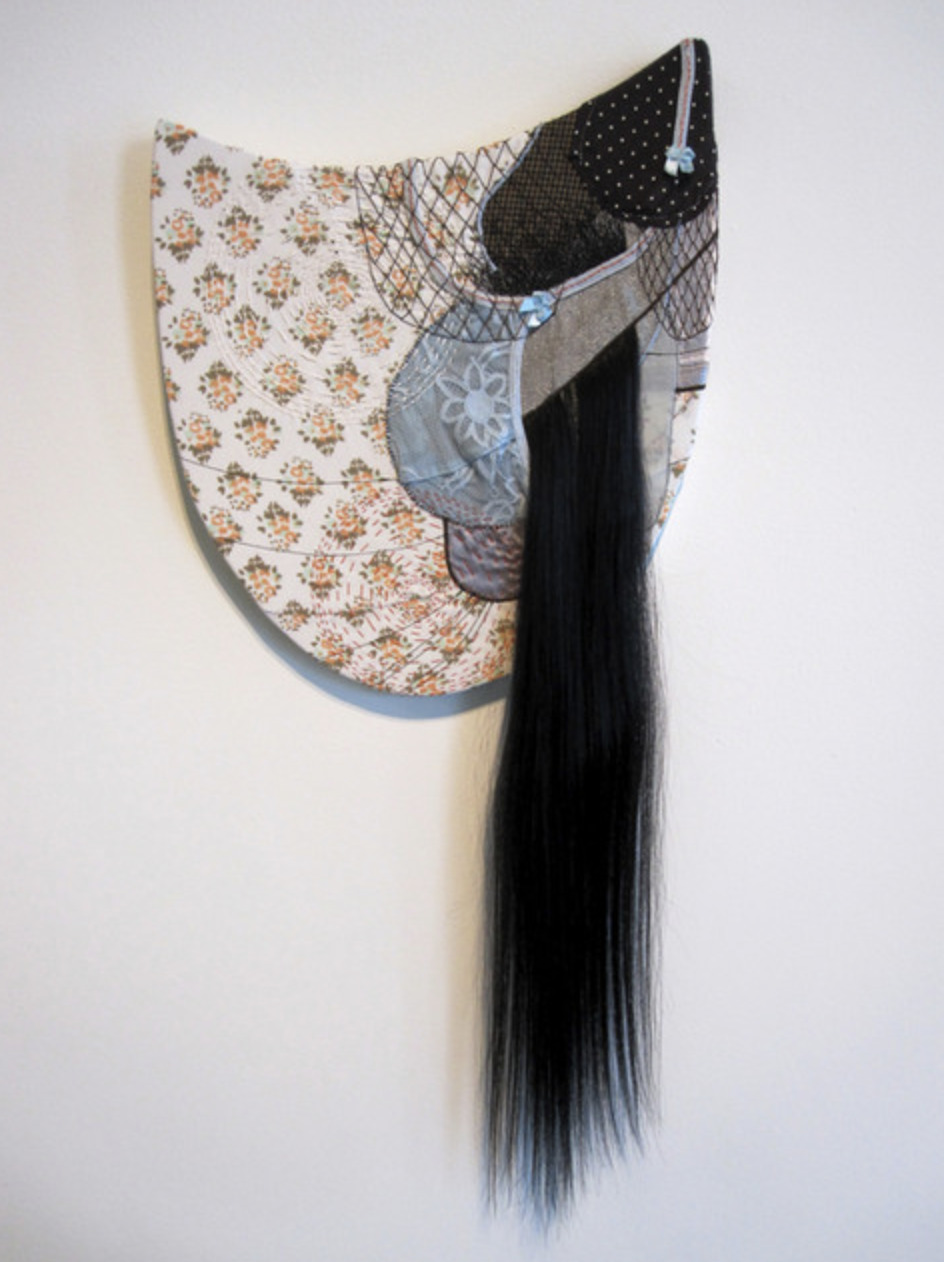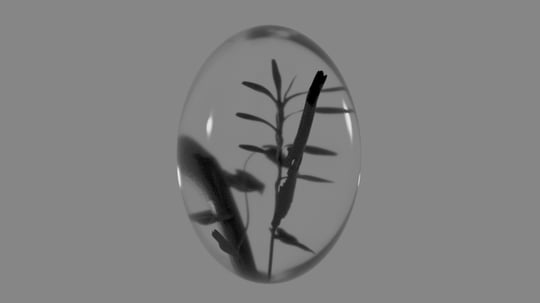
I first encountered Jessica Wohl’s work last October at Threesquared in Nashville. That show, “Matriarchs,” featured a series of collages, that joined the sexy fingers and legs sourced from beauty magazines with implements of domesticity. Fingers reach out of afghans and clutch pearls, legs protrude from sofas, and manicured fingers wield deadly kitchen utensils. Hung close together in a straight line on the gallery’s long wall, they resembled a formidable infantry, as threatening as they were alluring. Here, women are not weakened by the home but fortified by it. They are fierce protectors of the domestic sphere, camouflaged in its furnishings, ready for battle. But there was something defensive in the collages as well, something that led me to believe that Wohl is not wholly comfortable with claiming a place in the home herself. I sensed a reluctance to fully give in to the idea, to truly believe that women can liberate themselves from the warnings of Second Wave feminists.

The more I looked into Wohl, the more I liked her. Her earlier work includes drawings of suburban homes with carefully landscaped lawns rendered with skewed perspectives, making clear her distrust of “the good life.” In her sewn drawings, she embroiders on vintage Olan Mills-style family photos, obscuring or decorating the subjects’ faces, sometimes leaving only a set of eyes or an open mouth. It’s a Suburban Gothic feel that gives beauty and darkness equal attention, reminding us that looks can be deceiving.
It’s with this background that I approached her current show “Letting Go” at Zeitgeist in Nashville. Though the majority of her pieces are technically quilts—they’ve got backing, batting, and tops that are stitched together by hand and machine—I hesitate to call them that. As a quilter myself, I appreciate the many stages of the process and the history of the craft. I can examine mitered corners, praise a perfectly flat binding seam, and turn my nose at puckering fabric. I’ve spent hundreds of hours on quilts, and thousands of dollars on quilting supplies. Having done this, I don’t believe that my quilts are works of art because there’s no conceptual framework. Their primary role is functional. Wohl’s are different. You could snuggle up in her queen-sized behemoth Sag and Fade, but the small scale Peachy Pouches might accomplish even more at 28 by 12 inches. It includes bra straps, panties, and fishnet embroidery layered on a wallpaper-like print that makes me hyperaware of how our bodies wear out.

The works in “Letting Go” are much more like paintings than they are quilts. She lays down big swaths of color, changes her stitch length or density to explore line quality, and rearranges material to create negative space. She doesn’t insist that these works are paintings in the way someone like Joe Fyfe might; but the process feels like painting to her. She uses a variety of traditional sewing methods to experiment with lines, like the heavy outlines of sashiko embroidery, the drawn quality of needle-thin stitches you get with a free motion presser foot, and the tried and true straight stitch of the quilter. All of these contribute texture and generate interest on the surface, like a painting, but Wohl also loves the feel of the material in her hands.
You don’t have to get very close to see that the works are made from used clothing (including underwear), sheets, and napkins—things that have worn out their wear. They have an air of familiarity and comfort; the materials imbue the work with a sense of history and—for lack of a better word—energy. At the opening, one woman told Wohl that Log Cabin Drip Drape “reminds me of being four years old and standing next to my grandmother in her housecoat.”
Then, there’s the hair. In most of the paintings, Wohl added human and synthetic locks that bring a touch of darkness to the work. They hang vertically, as if dragging the paintings toward the floor. The effect is a sag that brings to mind aging and loss.

The hair also evokes associations with the residents of the home. The gray hair in Sag and Fade recalls an aging mother or great aunt, while the long, dark locks in Black and Blue Burst recall a woman in her prime. Wohl has said that she hopes the hair will help us envision people wearing and interacting with the materials: a bed sheet becomes something that someone slept in, dreamt in, had sex in. These associations elevate the paintings conceptually. Like Wohl’s other work, you shouldn’t overthink it. It’s a feeling she’s going for, not a statement.
Though Wohl is revisiting some of the angst in “Matriarchs,” “Letting Go” is not so weighty. Wohl tells me that, for a long time, she had anxiety about the home that she brought to her work, in large part due to her childhood. When her parents divorced, then refused to speak to one another, any kind of contented home life was marred by uncertainty. As she was creating the works in “Matriarchs,” she thought about what it would be like when she married and had children, and what kind of choices she would make for them. She wondered how people would view her if she decided to put her career on hold and stay at home, as well as how she’d view herself. Last November, right after the Threesquared show, she got engaged, and all of that fear just vanished. “I’m a snake shedding my skin, and the tail is coming off,” she said. “This is the last part of it.”
“Letting Go” is on view at Zeitgeist, along with John Donovan’s “New Personal Best!,” through June 27.





